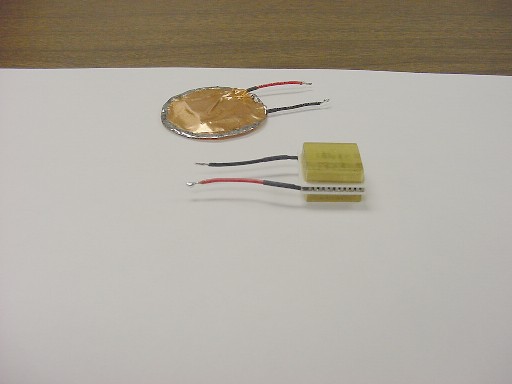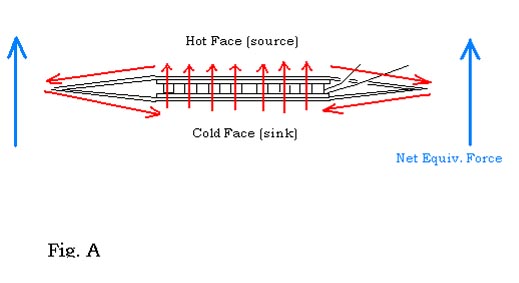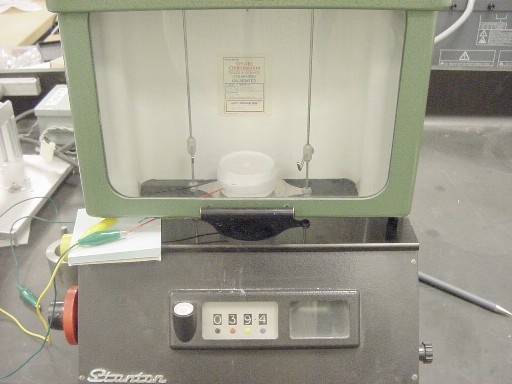

Observations of an Anomalous Reversible Weight Change Effect Initial Report – 160201A N. A. Reiter 18 February, 2001 Background: Since 1997, considerable correspondence and discussion has transpired among the members of our project on the notion of utilizing known forms of energy in novel ways to affect the weight of a mass. This notion has a variety of embodiments, including the alteration of theorized physical properties of space, or the manipulation of atomic matter in specific ways to affect it’s coupling with physical space or a gravitational force. We have also considered the possibility that what we recognize as the gravitational force might be shielded or screened by unusual means. Considerable effort on the parts of both amateur and professional experimenters worldwide has gone into the broad notion that the electromagnetic force might be manipulated to affect gravity and weight, apart from the known forces on charged bodies. We have approached this idea ourselves in a number of ways. Cursory evidence and experimentalist testimony suggests that at very high electrical field potentials and densities, some coupling with gravity may be found, although no thorough theoretical modeling has predicted such an effect, except at extremely high (practically unattainable) energies. We have also turned toward the examination of different forms of energy known to affect condensed matter, to ascertain what potential might exist for coupling with the gravitational force. One of these is forms of energy is heat. If thermal energy in a mass manifests in the form of atomic and particle vibration, might there exist the potential for altering the susceptibility of mass to gravitational force by some novel manipulation of the energy contained in heat? If one considers the theoretical implications of the quantum vacuum, it is conceivable that thermal influences might be capable of altering the vacuum radiation pressure on conductive materials, thus allowing for macroscopically measurable mechanical forces. With respect to thermo-gravity concepts, the experimental field is extremely sparse in it's population. In the 1960’s, an Italian American engineer and physicist, Gianni Dotto received a US patent # 3,839,771 for a "thermionic couple". The device was a massive ring of copper that was configured as a novel oscillator using both the Peltier and Seebeck effects. A number of very peculiar and unsubstantiated anecdotes arose about this device, among which was a claim that during operation, the device would lose a portion of it’s apparent weight. More recently, the experimentalist Peter Fred, from Cincinnati, Ohio has claimed weight change effects in aluminum hemispheres through which heat was made to flow. This work is on-going, with emphasis on modeling and disentangling of convective artifacts. The following disclosure concerns our own fortuitous (and serendipitous) encounter with an effect that is suggestive of a thermodynamic interaction with gravity or weight. We do not offer any theoretical modeling at this time. If demonstrated to be a reproducible effect of a genuine sort, we acknowledge that the current theories of heat and thermoelectric effects may fall short of an easy explanation. Observations: Without much of a rationale apart from intuitive hunches, we had, several years ago, considered that any possible "thermo-gravity" effects might manifest in systems where heat is made to flow, or is pumped, at a high density or high velocity through a mass. A candidate for such a system might be a solid-state thermoelectric Peltier module. It was felt that someday, it would be an interesting venture to try weighing a powered Peltier device, to look for any sign of anomalous weight changes. The idea was then "back-burner’ed" for a long while until a recent session of brainstorming brought the matter up again. On Friday, February 9th, 2001, we set up a small Peltier module, with copper foil discs glued to each side, on the pan of our Stanton milligram balance, and connected it to a variable power supply. When the power supply was turned on, providing 2 amperes of current to the module, a readable weight change was indicated by the balance! The magnitude of this weight change was approximately 2 ½ milligrams, and was in the positive direction (weight increase). The leads to the module were re-arranged, and we tried again – a similar result ensued. We next swapped lead polarity at the power supply. Now, we registered a weight decrease of similar magnitude. The procedure was repeated over and over, with lead wires arranged at different angles and spacings. In some configurations, shifting of the balance pan due to wire sagging made readings erratic. However, after many hundreds of on/off cycles over the next three days, the impression of a reversible weight change effect grew stronger. In 1994, we had found and dealt with an insidious artifact that has tripped up many an experimenter in the field of amateur gravity research – the torque impressed by current carrying lead wires due to I2R expansion of the wire material. At the time, this effect was ultimately found to be responsible for an apparent weight loss effect we had been chasing in a HF RF oscillator circuit. The effect witnessed now, on the other hand, was peculiar from the perspective of this artifact because of the reversal of weight change with applied polarity. I2R expansion of lead wires was independent of current direction but dependent on current magnitude. During the week of February 11th, we set about optimizing the effect to as great a degree possible, as well as (and more importantly) setting about eliminating the most likely artifacts. The basic effect seemed to be stronger in some configurations than others. For example, a bare-faced Peltier module chip would produce a more sporadic sequence of weight changes. However, it was found that by adding a small mass to both hot and cold faces, a more reliable reading could be obtained. More reliable yet, and seen to produce the strongest effect, was the addition of a closed metallic loop from hot to cold faces. This was achieved by sandwiching the Peltier chip in a round envelope made from two discs of either aluminum or copper foil, soldered or epoxied at the rim. SEE PHOTO "A"
in a System Containing a Thermo-electric Peltier Device.

In this respect, the device comes to resemble a thermal analogue of a toroidal coil. Heat is pumped by Peltier Effect through the module, diverging outward through the hot face of the foil sheath or envelope, around the periphery, then converging at the cold face center.
In this configuration, that of a closed loop or thermal torus, we find extremely consistent results. SEE FIG. A.

Artifact Considerations:
Lead wire torque / expansion:
A variety of lead wire configurations were used, including fine gauge copper wire strain relieved at pivot points, the use of fine lead/tin solder as connecting wire, and finally, 2mm wide strips of .005" copper foil containing sections folded accordian style for absorption of expansion. All lead wires were either pivoted or placed at such a height as to be parallel with the horizontal plane of the device being tested. Additionally, we note again that I2R expansion is traditionally seen to be independent of current sign.
Torque from coupling with the geomagnetic field:
Since this artifact could conceivably be reversible, we substitute a 10W 10 ohm power resistor for the Peltier assembly on the balance pan, and repeat our test sequence. NO weight change effect, reversible or otherwise, is seen.
Thermal influence on surrounding air / convection:
Two versions of the device were placed in Styrofoam enclosures on the balance pan. While not a perfect adiabatic wall, it was felt that this arrangement should attenuate or slow down the rate of the effect to a noticeable degree, if such an artifact was at work. It did not. The effect remains consistent in speed and magnitude with thermal shielding in place. SEE PHOTO "B"

Discussion:
The effect observed has survived the initial round of "artifact removal" protocol remarkably well. At this time, we feel confident that exploration must continue. While the magnitude of weight change observed is not great, it lies within the range easily achieved by equipment available in most high school and college physics labs.
Many key questions must be answered. For example, is the effect, if real, a weight change indicating an alteration of the force of gravity on a mass, or is it due to the evolution of a force that acts on the material of the device? In order to answer this, the device could be placed at the end of a beam suspended from a torsion wire, with the thermal axis in a horizontal position. If a rotation of the beam is noted, then we might infer that the effect is actually a directed force, perhaps acting on space itself. On 17 February, we attempted to set up a crude torsion pendulum experiment for this purpose. Results were indeterminate, however. We did observe a very minute motion of the test device in the predicted direction, however without any means of calibrating the plain copper wire used to suspend the balance beam we cannot calculate what the sensitivity of the arrangement should have been. Thus, this matter remains to be addressed.
Another experiment, planned for the near future, is the placing of the system along with an optically switched battery pack and thermal insulation / shielding on the balance pan. In this fashion, all physical connections to the world external to the balance enclosure can be eliminated. This would allow the final removal of the possibility of artifact from lead-in wiring.
We once again repeat that at present, an explanation of the mechanism behind the effect is unclear. It is our hope that as more empirical data is accrued, the likelihood of a model will become greater.
At this time, we submit:
This experimental effort was carried out on behalf of the McMaster Foundation for Applied Gravity Research, and the Avalon Foundation.
Equipment data:
Peltier devices used - Melcor brand # CP1-0-71-06C 14.4W, 8.6Vmax, 3.0A max, 67o max temp. diff. 23mm x 23mm x 3.4mm
Power supply – Elenco Precision XP-580 2-20VDC variable
Balance – Stanton Unimatic laboratory balance, .001 gram resolution (mechanical)
